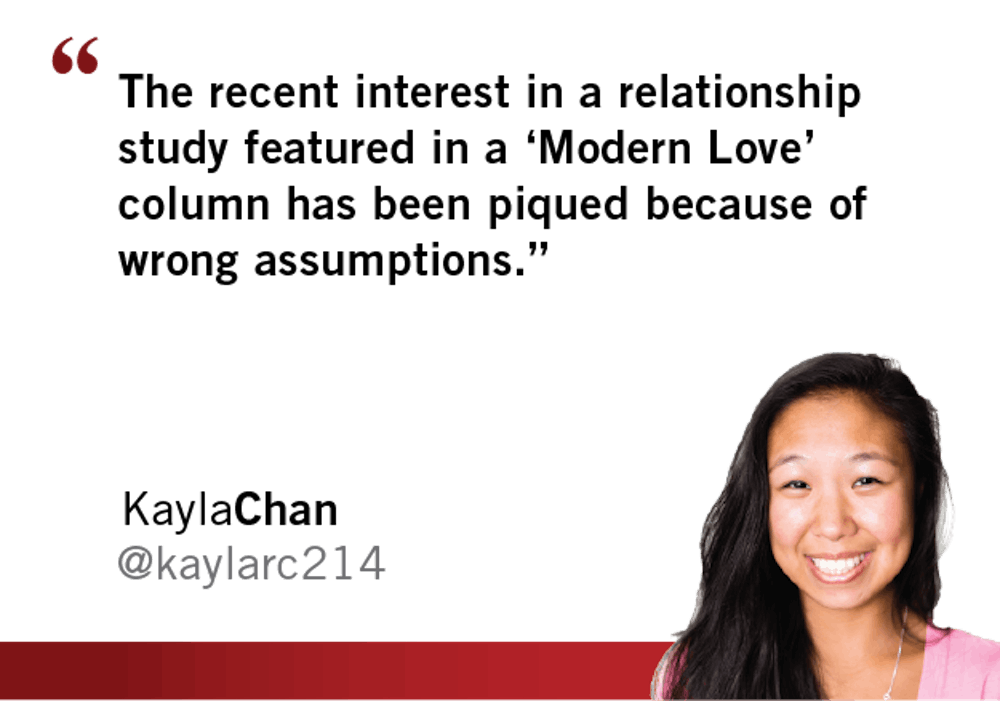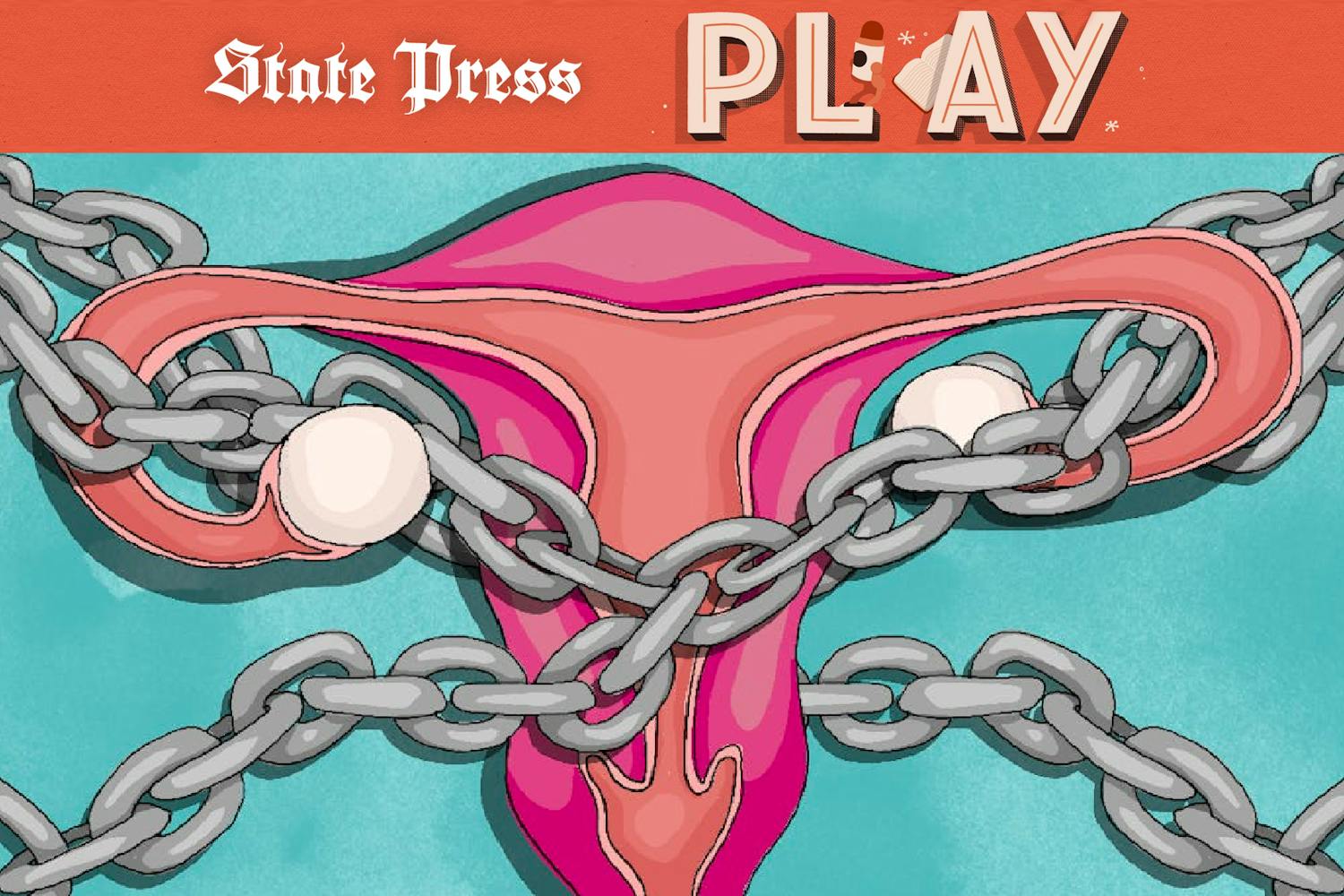Staring into someone’s eyes for four whole minutes will not necessarily make you fall in love. Coming off the back of Valentine’s Day weekend, there is plenty of love in the air, but only what was already there. The New York Times’ Modern Love column, “To Fall in Love With Anyone, Do This,” by Mandy Len Catron, has shed new light on a 1997 study headed by Arthur Aron.
The study is fairly simple. It put two people together after a pre-assigned questionnaire and had them answer 36 questions then stare into each other’s eyes for four minutes. These questions are supposedly crafted in a way that will propel the relationship to the level of intimacy that is often associated with love. The questions are set up into three different sets that progressively get more personal.

For a study that is fairly old, it is impressive how much new interest and experimentation was caused by Catron’s article. Her modern love story — of going through these 36 questions with an acquaintance, staring into his eyes for the solid four minutes, and falling in love — has news websites from Buzzfeed to Forbes reporting on these 36 questions that supposedly lead to love — and what better timing for a spike in popularity. In fact, there are even apps being built to help facilitate the questions with the person you are hoping to fall in love with.
“Love is central to human life. It is the biggest predictor of relationship quality, it is the biggest predictor of human happiness, more than wealth or success, and it’s a huge predictor of health and how long we’ll live,” Aron said in an interview for UC Berkeley News Center, the very university the study was conducted at. It’s no wonder then, that Valentine’s Day would be the perfect stimulus for individuals to be inspired to test this experiment out for themselves.
However, there are many flaws to this experiment. First of all, the Catron’s love story began with two people who were clearly already into each other. They were at a bar, she had already stalked his Instagram account and had found their way to the experiment by already being on the topic of falling in love. The implication of the title, “To Fall in Love With Anyone, Do This,” is therefore misleading. The acquaintance that she falls in love with isn’t just “anyone.” Similarly, in the original study the participants were matched ahead of time based on initial questionnaires; it wasn’t just a random pairing.
The experiment is great in that yes, it does seem to be able to propagate intimacy but it doesn’t necessarily mean that you’ll fall in love with someone, especially if staring into their eyes for four minutes ends up creeping one of you out. There are too many flaws to really believe that this will make two people fall in love; there’s the possibility that someone is not open to answering honestly, or that they just don’t like any of your answers. There are so many other things that go into falling in love with someone, and even Aron says, “It could contribute to it; part of falling in love is feeling a connection.”
So there you go; these 36 questions will not guarantee you a soul mate, and it’s absurd to think it could. In fact, falling in love is such a strange part of human behavior that is still widely unknown that The New Yorker’s “To Fall Out of Love, Do This” could effectively cause two people to do the exact opposite. Have fun with the 36 questions, learn something about someone, but don’t bank on it to find you a new lover.
Reach the columnist at Kayla.Chan@asu.edu or follow @KaylaRC2014 on Twitter.
Like The State Press on Facebook and follow @statepress on Twitter.
Editor’s note: The opinions presented in this column are the author’s and do not imply any endorsement from The State Press or its editors.
Want to join the conversation? Send an email to opiniondesk.statepress@gmail.com. Keep letters under 300 words and be sure to include your university affiliation. Anonymity will not be granted.




